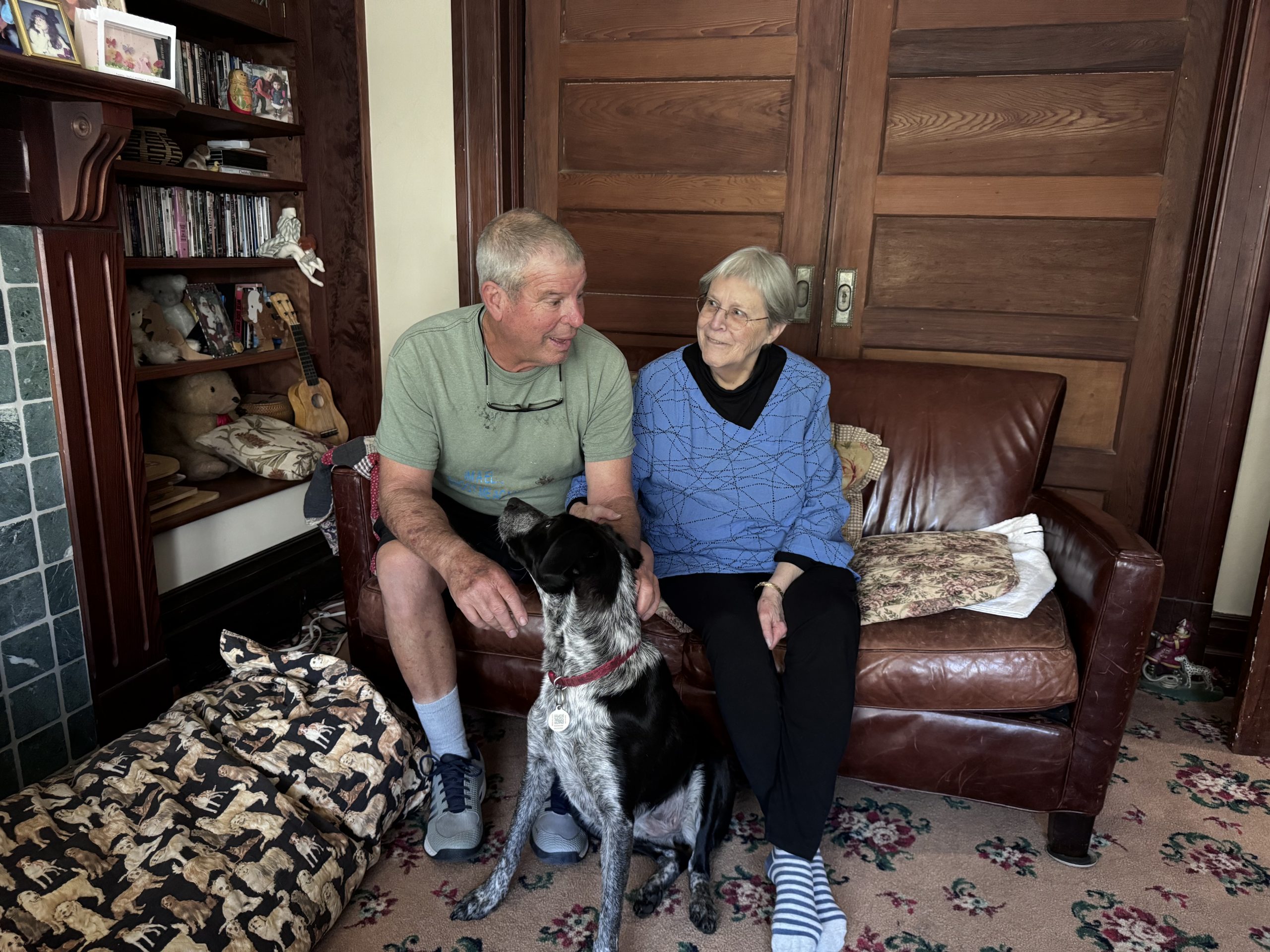This Mexican immigrant fought in the ring, started a dozen restaurants, raised five children, and never let defeat wear him down.
When 17-year-old Jose Heriberto Garcia came courting the young girl who’d become his wife, his future mother-in-law was so outraged that she ran him off her property – waving her pistol and shooting at his feet.
“I beat it out of there, oh si, senor,” Garcia recalled. “I came back the next day to state my intentions and she came after me again: ‘No, no, no, go away, she is too young.’ But we loved each other. A young priest I played soccer with married us. Her mom wouldn’t even come to the church.”
They were 15 and 17, and their marriage has now endured 50 years, surviving immigration, poverty, a stroke, opening, closing and losing at least a dozen businesses, purchasing and losing three homes and eight apartments to foreclosure, all while raising five children.
Garcia’s Don Quixotesque quest for the American dream has been shattered many times since his arrival 47 years ago, but he keeps his humor, his zest, and his small businesses going. Like the boxer he trained to be and would have been except for his wife’s ultimatum – “It’s the boxing or it’s me” – he gets off the ropes and back in the ring.
Garcia came to America the way many have. He crossed the border illegally in Tijuana, with some financial help from relatives of his wife’s in Oakland. He worked the fields of Santa Clara till border agents approached, later at a taqueria in San Francisco, then his own makeshift taco stand. He eventually opened his own restaurant, again with family help, in 1991.
By then, he and Maria had become citizens as had the four of their five children who were born in California. They live in the Bayview District and now have 30 grandchildren and a great-grandchild.
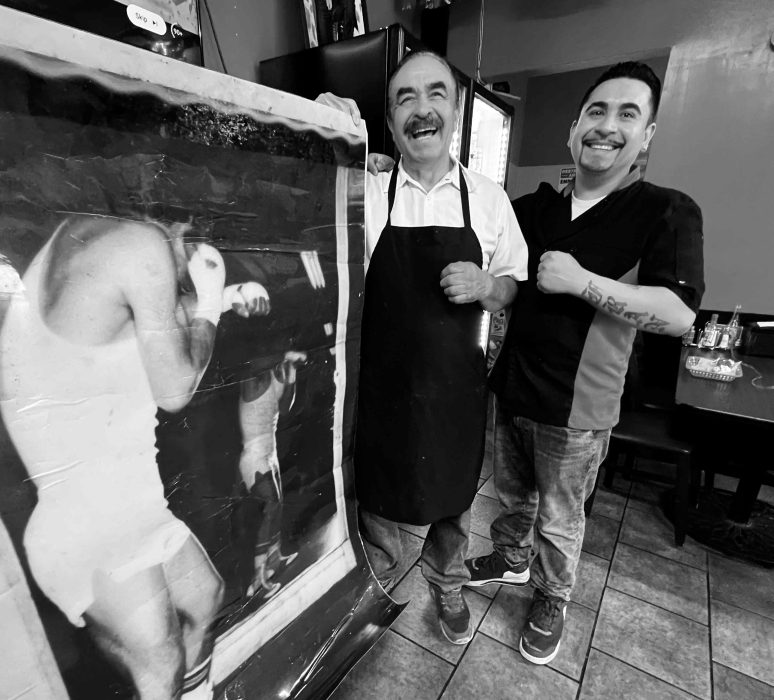
Garcia, now 67, was born in Mexico, in the remote rural town of Moncada, Guanajuato.
“I was born into a campesino family. We grew maize, (corn) cacajuate (peanuts) and sorghum. My father took me out to the fields at age 9. To keep our family of 12 together, we all had to work,” Garcia said. “I prepared the fields for planting in the morning, and then Papa let me be hired labor in neighboring fields in the afternoon.”
They were essentially sharecroppers: For every three sacks of crop they harvested, two went to the landowner. His family got one
Up at dawn to work the fields
Garcia, the second oldest, remembers getting up at 5 in the morning to prepare the soil on their plot, then by 8 a.m. going off to work for seven hours on a neighbor’s land.
“If I had energy left, I went back to help Papa on our land. My younger brother rode our burro out to the fields to bring us lunch: hot tortillas mom made rolled up in warm napkins, frijoles, and once a week a little container of meat.”
His parents never learned to read or write and didn’t think it important. But Garcia sometimes went to the town church in the afternoons to attend classes given by Capuchin monks. He learned enough to read and write.
The town had no pharmacy, no doctor, or hospital; it took two hours by bus to get to Celaya, the nearest town. When they were sick, they went to La Moncada’s veterinarian.
His father worked as a farm laborer in California and with the money he’d earned, he built his family an adobe house in La Moncada.
“There was no place for me and my wife in that small adobe house and I desperately wanted our own place.” So, in 1977, at age 20, he came north to work, crossing the border at Tijuana, dodging border patrol helicopters with searchlights scouring the desert. His wife would join him later.
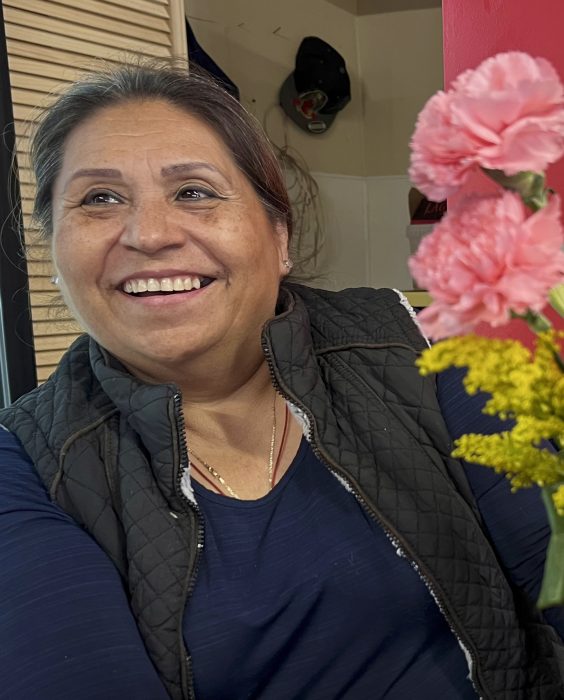
His wife’s uncle in the Bay Area loaned him the money for the journey, and he made his way to Oakland, where her relatives took him straight to the Social Security office. His Mexican military ID was enough to get a Social Security number.
“I had zero English, but I was young and strong. They took me to Santa Clara, to the fields, to harvest cucumbers.” But on his first day, word came that the “Migra” (slang for U.S. immigration officers) were going field-to-field in the Santa Clara Valley. So, Garcia left.
In San Francisco, he moved into a garbage can enclosure at the uncle’s place and walked up and down Mission Street looking for work.
The boss at a taqueria gave Garcia a tryout: Clean and stem all those boxes of dried chiles, he ordered. Garcia’s hands, rough and callused from his years in the fields, and were fast. “I broke all the speed records for chili cleaning,” he said.
The boss was impressed, and he got the job. “Watch this Mexican!” he told his other workers.
Then he brought Garcia to work in San Jose. They arrived at an empty three-story building made of plate glass, cement, and stucco. His job was to demolish it and build a new taqueria. “Fill this debris box daily, and I will pay you $90 a week. You work 7 to 7,” the boss said.
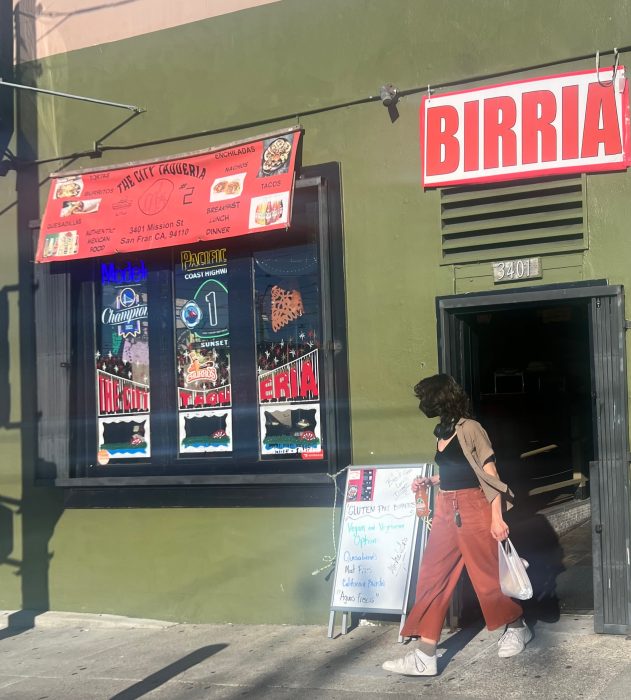
For six months as he tore the building apart, Garcia lived in the basement with only a toilet and a sink. He ate sandwiches and ramen from the corner drugstore. “I couldn’t speak English so I would point at what I wanted. I had a big black Afro filled with dust.”
One afternoon a guy walked by the job site, and Garcia couldn’t believe his eyes: It was the retired World Boxing Champ from Mexico, bantamweight Rafael Herrera, who’d opened a gym there in San Jose. Garcia had been a pretty good boxer back home. “I did a lot of street fights,” he said with a laugh. “Fifty pesos to beat a guy my size.”
He could have been a contender
Herrera offered to train him, and he began going to the gym every evening after work. “I lost my first fight and won eight after that; I never went more than three rounds because I was in such good shape.”
Mornings, he ran in the hills above San Jose before work. “I was strong and young, and I was fighting up and down the state, from Hayward to Bakersfield, even to Las Vegas. I went to cantinas and my promoter said: ‘Here is the local champion. Who wants to try their luck?’”
By then, a year in America had passed and his wife, Maria Socorro, had made the perilous journey to join him, traveling with their infant daughter in her arms. She was staying with her grandmother in San Francisco and looking for him, a difficult task in those pre-Internet days.
She discovered Garcia was working and living in San Jose. But when she learned he was boxing most nights, she told him to quit or she was leaving.
“He wasn’t even being paid for most of the fights,” Maria interjected into his story. “All he brought home were just trophies and gold belts.” “I was promised a Cadillac,” he countered. “Which he never got,” she said with a roll of her eyes.
“I was not ready for her to come join me when she showed up with the baby,” Garcia sighed. “We fought a lot over my boxing, but she won my last fight.”
He started with a taco truck
Finally, fed up with working for low wages, with another baby on the way, he decided to try working for himself and crafted an early version of a food truck.
He rented a little trailer with no motor. A friend hooked up the rig to his pick-up and dropped Garcia off at different San Jose nightclubs each night where he fed the drunken patrons. By this point, Maria had joined him in a rented room in San Jose.
However, he soon tired of the hassles of hauling his taco trailer and began selling burritos inside a market in San Francisco’s Excelsior district. With financial help from family members, he took over a closed Chinese restaurant in the Outer Richmond, a ramshackle building overrun with rats and cockroaches.
They moved to a rental in San Francisco while taking a year to fix up the new restaurant. “I remodeled the place by day, while nights I baked bread at Semifreddi’s and then Acme. I worked all the time, if I had a day off, I slept 24 hours.”
Mama is cooking
Before long, he opened a taqueria on Ocean Avenue. Maria cooked the food. “She is an excellent cook; the nuns trained her at her Catholic school back home. She made all the salsas, and I prepared the meats.”
But troubles dogged him. “One day a guy shows up at the taqueria from the California State Board of Equalization. And this guy shows me a pile of paperwork, which said we owed $400,000 in taxes.”
Garcia was in shock. “I took a day off and went to Sacramento to file an appeal. At the hearing, I said ‘I am not hiding any money, all I have is, well, nothing! I can sell my truck.’ They reduced the fine to $7000 and erased the debt. They took pity on me.”
Shortly after his lease on the Ocean Taqueria was up, the building owner announced she was doubling his rent. She changed the locks when he couldn’t pay it. All his equipment and stock were locked away. “I had to break in and take my own stuff.”
Garcia re-grouped and, in less than a month, he found a closed pizzeria on Divisadero. He reopened it as City Taqueria. Despite some expensive licensing struggles, the business prospered, and Garcia was able to open yet another business, City Taqueria 2 at Mission and 30thstreets, now run by his son Filbert.
His wife has been an integral part of his restaurants, involved in purchasing food and helping with prep work. For a time, she had her own place, Mama Coco’s on Mission Street.
By his count, Garcia has owned, at one time or another, 12 restaurants in San Francisco. His frenetic work pace may have contributed to a stroke in 2014 – he’s since recovered – but it enabled him to build a home back in La Moncada, which he tries to visit a few times a year. “I used to drive all the way from SF to Moncada, but I can’t do that now; I fall asleep on the road. Now I fly.”
But his investments in California real estate did not go so well.
In 2005, a realtor friend he trusted urged him to take advantage of then-low interest rates to buy a home. Garcia bought three – in the Excelsior. One was for him and his wife, another for his daughter, and one to rent out.” He also bought an apartment building in Visalia, eight units he fixed up on weekends.
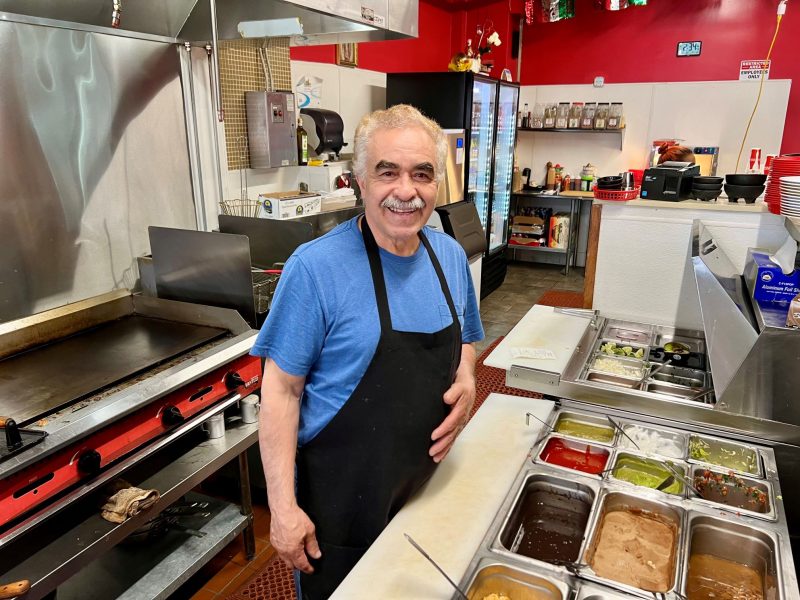
He lost them all in 2008 when the crisis hit. He hadn’t read the fine print, he discovered, and had signed on for adjustable-rate mortgages.
“I was in shock when I got the letters from the bank with my new payments. I went to my realtor, and he told me to just walk away, and that’s what we did.” Thirty days after they stopped paying, the locks were changed, and “foreclosure” signs posted on the front doors.
Garcia is not one to dwell on the bad things. As he tells his history, he frequently laughs at his own foibles and misguided ventures, his eyebrows raised as if to say, “Do you believe it?
Things are going well these days: He is about to open a third place, a pizzeria on Mission near Ocean Avenue.
“Maybe in two years I will retire, spend six months in Moncada and six months here on a little land I hope to buy in Napa. I want to grow vegetables and have a few animals.”
Just like the little boy who started out growing corn.




